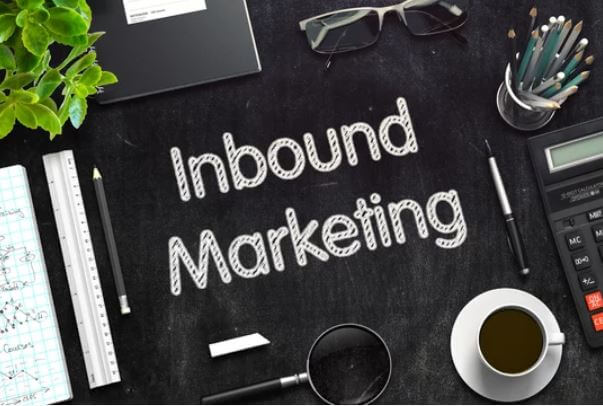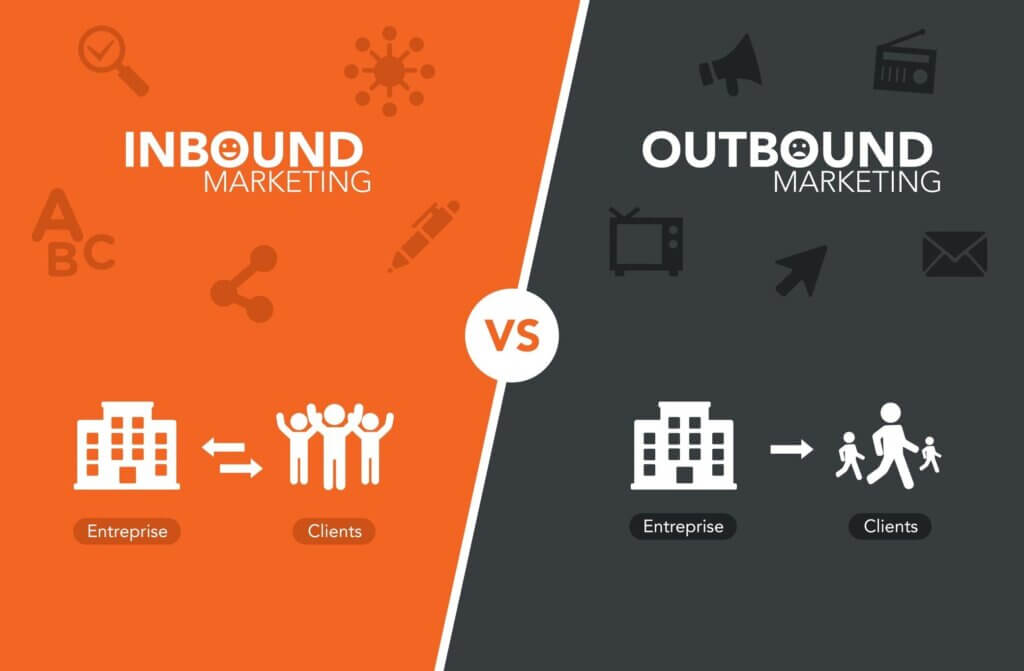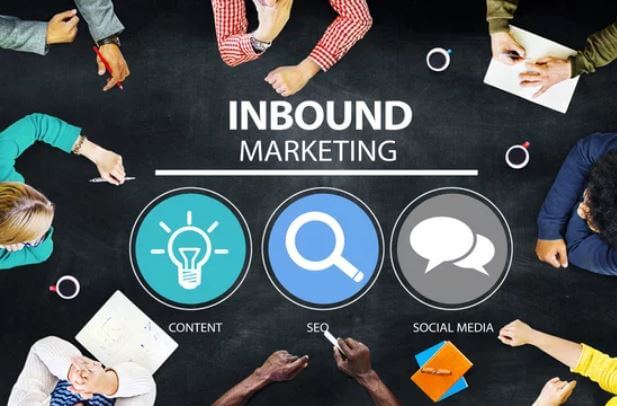Inbound Marketing
Introduction to Inbound Marketing
Inbound marketing is a customer-centric approach to marketing that focuses on creating and sharing valuable content with prospects and customers to attract, engage and delight them. The main objective of inbound marketing is to earn the attention of potential customers and convert them into loyal brand advocates. Inbound marketing is a holistic approach that integrates various marketing techniques, such as content marketing, search engine optimization (SEO), social media marketing, email marketing, and marketing automation, to create a seamless customer experience.

Definition of Inbound Marketing
Inbound marketing is a marketing strategy that focuses on attracting customers to your brand through content and experiences that are relevant and helpful. This approach contrasts traditional outbound marketing, which uses interruptive methods such as cold calling, advertising, and email blasts to reach customers. Inbound marketing leverages the power of the internet to create valuable content that pulls customers toward your brand rather than pushing your brand onto them.
Importance of Inbound Marketing
In today’s digital age, customers are in control. They have access to a wealth of information and are increasingly savvy about avoiding traditional outbound marketing tactics. Inbound marketing is essential because it allows businesses to attract customers through personalized and valuable experiences. The following are some of the critical benefits of inbound marketing:
- Builds trust and credibility with your target audience
- Increases website traffic and lead generation
- Provides valuable information to help customers make informed purchasing decisions
- It helps you establish thought leadership and industry expertise
- Nurtures long-term relationships with customers
- Improves the overall customer experience and encourages customer loyalty
Inbound marketing is a cost-effective and scalable approach that delivers measurable results. Creating valuable content and experiences tailored to your target audience can build strong relationships with your customers and establish your brand as a trusted resource in your industry.
In conclusion, inbound marketing is a customer-focused approach that leverages the power of the internet to attract, engage and delight customers. Inbound marketing helps businesses build trust, credibility, and loyalty with their customers by creating valuable and relevant content. Whether you’re a small business looking to establish a solid online presence or a large corporation looking to improve your customer engagement, inbound marketing is a powerful and effective marketing strategy that can deliver measurable results for your business.
The Inbound Marketing Methodology
Inbound marketing is a holistic approach centered around creating valuable and relevant experiences for your target audience. The inbound marketing methodology comprises four key stages: Attract, Convert, Close, and Delight.
Attract
The inbound marketing methodology’s first stage is attracting potential customers to your brand through relevant and engaging content. The following are some of the critical techniques used to attract prospects:
- Creating buyer personas: Understanding your target audience is critical to developing effective inbound marketing campaigns. You can better understand your customers’ needs, pain points, and motivations by creating detailed buyer personas.
- Optimizing your website for search engines: Search engine optimization (SEO) is a critical component of inbound marketing. Optimizing your website for search engines can improve your website’s visibility and increase the chances of attracting qualified leads.
- Creating engaging content: Creating high-quality, relevant, and exciting content is a crucial part of inbound marketing. Whether it’s blog posts, eBooks, infographics, or videos, your content should provide value to your target audience and help you build trust and credibility with your customers.
Convert
The inbound marketing methodology’s second stage is converting prospects into leads. The following are some of the critical techniques used to convert prospects into leads:
- Landing pages and forms: Landing pages and documents are essential to lead generation. Creating targeted landing pages and conditions lets you capture leads and start nurturing them.
- Calls-to-Action (CTAs): CTAs are an essential part of inbound marketing. They encourage prospects to take action, such as downloading an eBook, signing up for a webinar, or filling out a form.
- Lead nurturing: Lead nurturing is building relationships with prospects over time. By providing valuable information and experiences, you can build trust and credibility with your leads and move them closer to becoming customers.
Close
The third stage of the inbound marketing methodology is to close the sale and turn leads into customers. The following are some of the critical techniques used to close deals:
- Sales enablement: Sales enablement provides sales teams with the tools and information they need to sell effectively. By providing sales teams with access to valuable content, customer insights, and lead information, you can improve their ability to close deals.
- Lead scoring: Lead scoring assigns a score to charges based on their likelihood of becoming customers. You can prioritize your sales efforts by scoring leaders and focusing on the most promising opportunities.
- Closing deals: The final stage of the inbound marketing process. By providing a seamless and personalized customer experience, you can increase the chances of closing deals and turning leads into customers.
Delight
The final stage of the inbound marketing methodology is to delight customers and encourage them to become brand advocates. The following are some of the critical techniques used to satisfy customers:
- Customer engagement: Customer engagement is interacting with customers and building relationships. By providing valuable content and experiences, you can engage customers and encourage them to become active and loyal members of your brand community.
- Customer loyalty programs: Customer loyalty programs are designed to reward customers for their loyalty and encourage them to continue doing business with your brand.
- Customer advocacy: Customer advocacy encourages customers to become brand ambassadors and promote your brand to others. By delighting customers, you can encourage them to advocate for your brand and spread the word about your products and services.
Inbound Marketing Tools and Techniques
Inbound marketing is a powerful and effective way to reach, engage and convert potential customers. To succeed with inbound marketing, it’s essential to have a strong understanding of the available tools and techniques. Here are some of the most common inbound marketing tools and techniques:
- Content creation: Creating high-quality, relevant, and engaging content that provides value to your target audience. Some of the most common types of content include blog posts, eBooks, infographics, videos, and social media updates.
- Search engine optimization (SEO): SEO is optimizing your website and content to improve its visibility and ranking in search engine results pages (SERPs). This can be achieved through a combination of on-page optimization (such as keyword research, meta tags, and title tags) and off-page optimization (such as link building and social media engagement).
- Landing pages and forms: These are critical components of inbound marketing. They are used to capture leads and typically include a form that prospects must fill out to receive a piece of valuable content, such as an eBook or a webinar.
- Calls-to-Action (CTAs): CTAs are buttons or links placed on your website or in your content that encourage prospects to take action. They can motivate prospects to download an eBook, sign up for a webinar, or fill out a form.
- Lead nurturing: Lead nurturing is building relationships with prospects over time. By providing valuable information and experiences, you can build trust and credibility with your leads and move them closer to becoming customers.
- Email marketing: Email marketing is a powerful inbound marketing tool that can be used to engage with prospects and customers. With email marketing, you can send targeted, personalized messages to your subscribers and track their engagement with your content.
- Social media: Social media is a critical component of inbound marketing. You can build relationships, increase brand awareness, and drive traffic to your website by engaging with prospects and customers on social media.
- Marketing automation: Marketing automation automates repetitive marketing tasks, such as email campaigns and leads nurturing. This can help you save time and effort and provide a more consistent and personalized experience for your prospects and customers.
- Analytics and reporting: Analytics and reporting are critical components of inbound marketing. By tracking and analyzing key metrics, such as website traffic, leads generated, and customer behavior, you can gain insights into your marketing performance and make data-driven decisions to improve your results.
Utilizing these tools and techniques, you can create a powerful and effective inbound marketing strategy that drives results and delivers real value to your target audience. Whether you’re just starting or looking to improve your existing inbound marketing efforts, these tools and techniques can help you succeed.
Measuring and Analyzing Results
Inbound marketing is a continuous and iterative process that requires ongoing measurement and analysis to be successful. Measuring and analyzing your inbound marketing results will help you understand what’s working well and what’s not so that you can make data-driven decisions to improve your strategy and maximize your results. Here are some key metrics and tools that you should consider when measuring and analyzing your inbound marketing results:
- Website traffic: Website traffic is a critical metric that can be used to gauge the success of your inbound marketing efforts. By tracking the number of visitors to your website, you can determine whether your content is attracting the right audience and whether your SEO and social media efforts are practical.
- Leads generated: Leads generated are another critical metric that can be used to gauge the success of your inbound marketing efforts. By tracking the number of leads generated from your website, you can determine the effectiveness of your landing pages and forms and whether your lead nurturing efforts are working.
- Conversion rate: Conversion rate is a metric that measures the percentage of visitors to your website who take a desired action, such as filling out a form, downloading an eBook, or making a purchase. By tracking your conversion rate, you can determine the effectiveness of your calls-to-action and lead nurturing efforts.
- Customer behavior: Customer behavior is another important metric that can be used to gauge the success of your inbound marketing efforts. By tracking customer behavior, such as the pages they visit, the content they engage with, and the actions they take, you can gain insights into their needs, preferences, and behavior and make data-driven decisions to improve your strategy.
- Return on investment (ROI): Return on investment (ROI) is a metric that measures the financial return on your inbound marketing investment. By tracking your ROI, you can determine the overall economic impact of your inbound marketing efforts and make data-driven decisions to improve your results.
- Google Analytics: Google Analytics is a free, powerful tool that can be used to track and analyze website traffic, conversion rates, customer behavior, and other vital metrics. With Google Analytics, you can gain valuable insights into your inbound marketing performance and make data-driven decisions to improve your results.
- Marketing automation platforms: Marketing automation platforms, such as HubSpot, Marketo, and Pardot, offer robust reporting and analytics features that can help you track and analyze your inbound marketing results. With these platforms, you can follow the performance of your campaigns, see the impact of your lead nurturing efforts, and measure the ROI of your inbound marketing efforts.
By measuring and analyzing your inbound marketing results, you can gain valuable insights into your performance, identify areas for improvement, and make data-driven decisions to maximize your results. Regular measurement and analysis are crucial to success, whether you’re just starting with inbound marketing or looking to optimize your existing efforts.
Conclusion
Inbound marketing is a data-driven, customer-focused approach to marketing that aims to attract, engage, and convert potential customers by creating and distributing valuable, relevant, and targeted content. Using a combination of tactics, such as SEO, social media, content creation, and lead nurturing, inbound marketers can build relationships with their target audience, earn their trust, and, ultimately, convert them into customers.
Inbound marketing success depends on several factors, including clearly understanding your target audience, using the right inbound marketing tools and techniques, creating and distributing high-quality content, and measuring and analyzing your results. By continuously testing and refining your inbound marketing strategy, you can achieve sustainable growth and success for your business.
In conclusion, inbound marketing is a powerful and effective way to reach, engage, and convert potential customers and is an essential component of any modern marketing strategy. By following the inbound marketing methodology and using the right tools and techniques, you can drive results for your business, build strong relationships with your customers, and achieve long-term success.
F.A.Q
What are the types of inbound marketing?
Inbound marketing encompasses tactics and strategies designed to attract, engage, and convert potential customers. The following are some of the most common types of inbound marketing:
- Content Marketing: Creating and distributing high-quality, relevant, and valuable content, such as blog posts, videos, ebooks, and whitepapers, to educate and engage potential customers.
- Search Engine Optimization (SEO): Improving the visibility and ranking of your website and content in search engines like Google and Bing through various tactics, such as keyword research, on-page optimization, and link building.
- Social Media Marketing: Building relationships with potential customers and promoting your brand through social media platforms, such as Facebook, Twitter, LinkedIn, and Instagram.
- Email Marketing: Reaching out to potential customers and keeping them engaged with targeted, personalized emails, such as newsletters, promotional emails, and lead nurturing campaigns.
- Lead Generation: Creating and offering valuable resources, such as webinars, ebooks, and assessments, in exchange for contact information from potential customers, which can then be used for lead nurturing and conversion.
- Influencer Marketing: Partnering with influencers in your industry to promote your brand and reach new potential customers through their networks.
- Video Marketing: Creating and distributing engaging and informative videos to educate and entertain potential customers.
These are some of the most common types of inbound marketing, but many other tactics and strategies can be used to achieve your inbound marketing goals. The key is understanding your target audience, determining their needs and pain points, and creating and distributing content that meets those needs and resonates with them.
What is inbound marketing vs. outbound marketing?
Inbound and outbound marketing are distinct marketing approaches with different goals and methods.
Inbound marketing is a customer-centric, data-driven approach that aims to attract potential customers to your brand through relevant and valuable content. This approach focuses on earning the attention of your target audience by providing them with information and resources that meet their needs and interests. Inbound marketing tactics include SEO, social media, content creation, and lead nurturing. The ultimate goal of inbound marketing is to build trust and establish a relationship with your target audience, leading to conversions and customer loyalty.
On the other hand, outbound marketing is a more traditional, interruptive approach to marketing that focuses on reaching out to potential customers through various channels, such as TV and radio advertisements, direct mail, telemarketing, and billboards. Outbound marketing is often more focused on promoting your brand or product rather than building a relationship with your target audience. Outbound marketing aims to generate leads and sales through mass-reaching tactics.
Inbound marketing is a customer-focused approach that builds relationships through relevant content. In contrast, outbound marketing is a product-focused approach that promotes your brand through mass-reaching tactics.

What is an inbound marketing strategy?
An inbound marketing strategy is a comprehensive plan that outlines how you will use inbound marketing tactics to attract, engage, and convert potential customers. It outlines the steps you will take to build relationships with your target audience and provides a roadmap for how you will achieve your marketing and business goals.
An inbound marketing strategy typically includes the following components:
- Defining your target audience: Understanding your ideal customers, their needs and pain points, and what motivates them to take action.
- Creating buyer personas: Develop detailed profiles of your target audience that describe their goals, challenges, and preferences.
- Setting goals and KPIs: Establishing clear, measurable goals and key performance indicators (KPIs) that will help you track the success of your inbound marketing efforts.
- Conducting a content audit: Reviewing and assessing your existing content to identify what is working well and what needs to be improved.
- Developing a content strategy: Creating a plan for creating and distributing high-quality, relevant, and valuable content that meets the needs of your target audience.
- Optimizing your website: Improving your website’s user experience and search engine optimization (SEO) to make it easier for potential customers to find and engage with your brand.
- Leveraging social media: Building relationships with potential customers and promoting your brand through social media platforms, such as Facebook, Twitter, and LinkedIn.
- Creating lead magnets: Develop valuable resources, such as ebooks and webinars, that you can offer to potential customers in exchange for their contact information.
- Implementing lead nurturing: Sending targeted, personalized emails to potential customers to keep them engaged and move them down the sales funnel.
- Measuring and analyzing results: Using analytics and other tools to track the performance of your inbound marketing efforts and make data-driven decisions to improve your strategy.
An inbound marketing strategy should be flexible and adaptable, as your target audience and their needs may change over time. By continuously testing and refining your system, you can achieve sustainable growth and success for your business.




